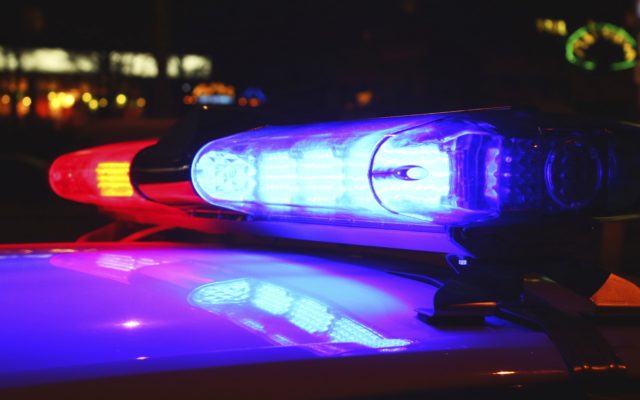New 988 Lifeline sees major uptick in calls — but concerns remain

▶ Watch Video: “988” becomes new mental health crisis hotline
On July 16, the national suicide lifeline number changed from ten digits to the simpler 988, in hopes of making it easier for people in crisis to get help. Two months later, data shows there’s been a significant uptick in calls — but longstanding concerns remain about the potential risk of police intervention in critical situations.
Data released by the U.S. Department of Health and Human Services on September 9 showed that 45% more people contacted the new national suicide lifeline in August 2022 than in the same month last year. More than 361,000 calls, texts and chats came through to the service this August — 152,000 more than in 2021.
Despite the sharp rise in individuals seeking help, answer rates and wait times have improved, according to the data. Overall, 88% of calls, chats and texts got through in August, compared to 67% in August 2021. The average response time from a 988 counselor was 42 seconds, compared to 2.5 minutes in August 2021.
Earlier this month, HHS also announced a $35 million grant opportunity to improve 988 Lifeline services in tribal communities. In a statement, HHS said the funding will “result in more trained crisis counselors better able to connect with even more people in need.” The grant is a piece of the $150 million assigned to the 988 Lifeline under the Bipartisan Safer Communities Act, which was signed into law in June.
Suicide was the 12th leading cause of death in the United States in 2020, according to CDC data. The numbers are even more dire for certain age groups: it was the second leading cause of death for 10- to 14-year-olds and 25- to 34-year-olds that year, the CDC said.
Though the new lifeline number has led to an increased call volume, concerns about the lifeline have circulated on social media. Some are even discouraging people from calling, citing concerns about the possibility of police involvement or forced hospitalization in the most critical of situations.
Crisis counselors only reach out to emergency services “in cases where risk of harm to self or others is imminent or in progress, and when a less invasive plan for the caller/texter’s safety cannot be collaborated on with the individual,” according to the 988 Lifeline’s website. Less than 2% of lifeline calls have led to the involvement of emergency services, and over half of those dispatches happened with the caller’s consent, the website said.
But when police do get involved in mental health crisis situations, the results can be catastrophic. Hannah Wesolowski, the Chief Advocacy Officer for the National Alliance on Mental Illness (NAMI), told CBS News that police can rapidly escalate a situation when a person is in the midst of a mental health crisis.
“Somebody in crisis may not be able to understand or react to commands that law enforcement may be issuing,” she said. “This could be misread by law enforcement officers who don’t have the same training a mobile crisis team may have.”
According to a Washington Post log of fatal police shootings that began in 2015, more than 1 in 5 people killed by police had mental illnesses. More than 1,600 people with mental illnesses have shot and killed by active-duty officers since the database began, according to the data.
“One of the things we struggle a tremendous amount with in mental health is discrimination against people, or stigma related to people with mental health problems,” Dr. Sally Ricketts, the co-chief of Psychiatry at Bassett Healthcare Network, told CBS News. “And in a way, when you pull something like this out, you’re identifying that population.”
NAMI created a portal where people can submit their own crisis response stories. One of those people is Sonia, a mother from Georgia who said she called the police on behalf of her son before the three-digit lifeline was implemented. The police “found him and put him in jail,” she wrote. “He doesn’t deserve jail. He needs mental health help.”
In a blog post for Well-Being Trust, a foundation dedicated to improving mental health, another woman said that a telemedicine therapist she spoke to in 2021 — who was not affiliated with the lifeline — called 911 just minutes into their conversation, even though she had only shared “vague thoughts I had been having of hurting myself.” The woman said she spent four hours in the ER amid the COVID-19 pandemic before she was deemed not suicidal and allowed to go home.
“When I think back on my experience, I feel angry,” she wrote, in a quote also submitted to the NAMI portal. “I think about how I, in a very vulnerable state, had to advocate for myself to prevent my situation from escalating with the police. I think about all the people, especially those of color, who did not and will not have my presence of mind during their moments of mental health crisis.”
The lifeline tries to connect callers to the nearest call center based on their area code — but that doesn’t always reflect a person’s current location. Unlike 911, 988 does not have access to callers’ precise whereabouts.
The lifeline website notes that if necessary, “Lifeline counselors must provide what information they have to 911 operators — the caller’s/text user’s phone number or the chat user’s IP address — to enable them to do whatever they can to locate the individual.”
Many advocates and mental health experts have said that instead of law enforcement, mobile crisis teams should be sent in emergency situations. The teams, staffed by mental health professionals, are able to travel to those in need of immediate help, deescalate crises and connect people with crisis stabilization programs and other longer-term resources.
Although mobile crisis team usage has expanded significantly across the United States in recent years, there are areas where they are not readily available.
The Biden administration has spent hundreds of millions of dollars to support the transition to 988, including the development of more crisis response teams, HHS said. In September alone, the administration will finance $9 million in “grants for states, territories, tribes and public or private nonprofit entities to create or enhance existing mobile crisis response teams that can respond to mental health crises in lieu of law enforcement or emergency medical responders,” according to HHS.
Wesolowski said many people involved with NAMI have used the 988 Lifeline and have expressed relief they got through to crisis counselors quickly and received help. But she said it doesn’t mean the work to get resources to those in crisis is over.
“988 is one part of this process and an entry point, but we need more crisis response,” Wesolowski said.
988 is not “mission accomplished,” she said — but noted that “six months from now, six months after that, we are going to see so many more crisis services coming online that really will save lives.”
If you or someone you know is in emotional distress or suicidal crisis, call the National Suicide Prevention Hotline at 988 or 1-800-273-TALK (8255).
For more information about mental health care resources and support, The National Alliance on Mental Illness (NAMI) HelpLine can be reached Monday through Friday, 10 a.m.–6 p.m. ET, at 1-800-950-NAMI (6264) or email [email protected].



